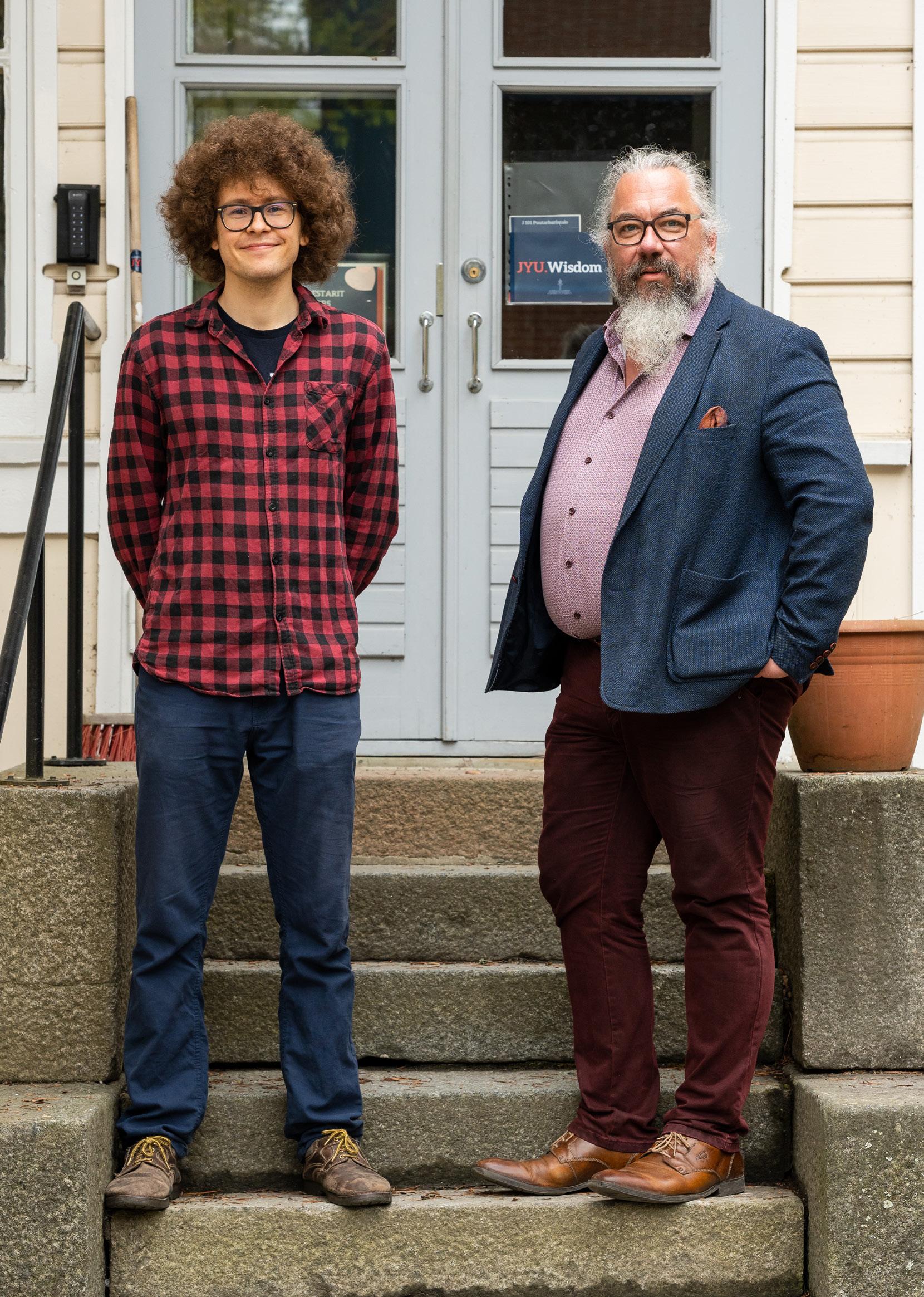
4 minute read
Planetary well-being – the only mission that really matters
Nature is mankind’s most important asset, yet efforts to slow down biodiversity loss, never mind stopping it, has constantly fallen short. University of Jyväskylä has introduced the concept of planetary well-being to help societies, organizations and individuals recognize the necessity of widening the perspective from human centered development to the well-being of all life and natural ecosystems on the planet.
When we talk about biodiversity, we talk about life in all its forms,” Sami El Geneidy, Doctoral Researcher at University of Jyväskylä explains. “Stopping biodiversity loss is a way to protect life, and that is exactly why all organizations should take responsibility.”
Advertisement
“People are heterotrophic organisms,” Janne Kotiaho, Professor of Ecology, adds. “We must consume natural resources in order to simply survive. However, the current consumption is unsustainable and while we destroy our environment, we destroy ourselves.”
It is not possible to completely stop the development in all societies of the world and as long as humanity exists there is need for some consumption. Nevertheless, there is no question that highly developed nations, such as Finland, need to reduce consumption. If everyone causing biodiversity loss at the beginning of the supply chain commit or is decreed to compensate the loss they cause, there would be a financial incentive to avoid unnecessary environmental impacts.
Calculating the biodiversity footprint
“There are five major direct drivers that cause biodiversity loss – they are the fundamentals through which organizations can calculate their biodiversity footprints,” El Geneidy lists. “The use of land and water, direct exploitation of natural resources, climate change, pollution, and harmful invasive species.”
By solving four steps organizations can now calculate their biodiversity footprint: the amount and type of consumption, the amount and type of the driver the consump- tion generates, the geographical location of the driver, and the biodiversity loss the amount of each driver causes at each location.
Using sophisticated methods from accounting tools to scientific databases, the biodiversity footprint of any organization can be calculated.
From calculations to offsetting the footprints
“Once we are aware of the damage our actions cause, we can find ways to avoid and reduce it,” Kotiaho continues. “Making up for the net loss to the nature is the core of biodiversity offsetting.”
“Kotiaho points out that organizations must first estimate the amount of damage they cause with every specific action, and then find a way to avoid the damage and offset the damages that are unavoidable. When a supermarket or airport is built by taking down trees and destroying the ecosystem of the forest’s organisms the damage is done practically for good. Thus, to achieve no-netloss for biodiversity, also the offsets produced somewhere else should be permanent.“
There are two main ways to carry out biodiversity offsetting: protection and restoration. While protection means removing the pressure to use a certain area, commodity or such, restoration is about improving an ecosystem that has already been weakened.
Turning words into action
It is inescapable that biodiversity offsetting is required to slow down biodiversity loss. How organizations actually carry out offsetting their damages and how they communicate about it has been, unfortunately, a bit uncontrolled. Greenwashing by distributing false information about offsets and acquiring license to trash by throwing promises about offsets in the air are sad examples of organizations still putting short-term gains in front of a sustainable planet.
“Airlines with huge fuel emissions claiming that wooden forks inflight make a difference are on a very thin ice,” Kotiaho mentions. “While every positive deed counts, small steps should not be used as a greenwash for the actual problem underneath.”
While everyone has a responsibility to avoid unnecessary consumption, it really is up to the decision-makers at the governments and organizations to put things straight. Planetary well-being framework provides grounds to shift our worldview to be supportive of over-generational sustainability and to stop biodiversity loss. The responsibility to put the plans in action falls on the shoulders of those on power. |
Core research fields at University of Jyväskylä’s Faculty of Mathematics and Science include resource wisdom and circular economy, both of which provide new solutions for sustainable, vigorous, resource-efficient, and low-carbon future.
See our open courses: www.jyu.fi/science/ en/admissions











